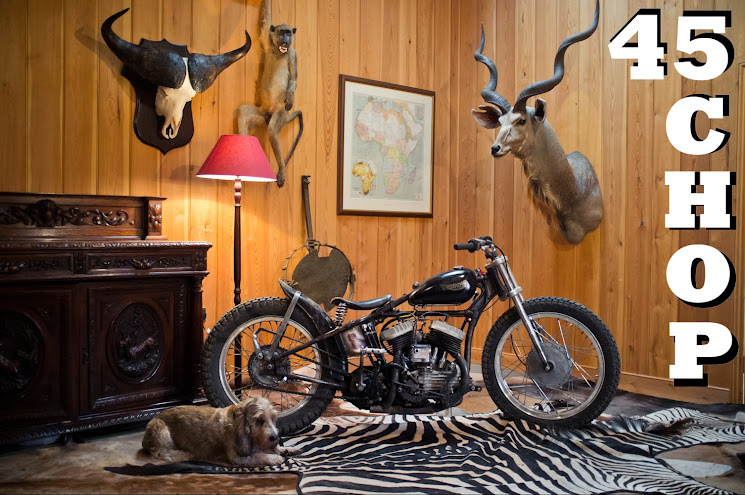Check out these crazy bikes, evolved (as the best looking do) through the specialised competition of pacing.
Popluar in the 1920s onwards this was sort of like the European version of board track racing. Teams consisting of a motorcycle and a bicycle (or 'Stayer' bikes) would race around a velodrome at up to 75mph. The bicycles keeping up with the motorbikes which provided an aerodynamic slipstream, often 'regulated' through the leather suits worn by the riders.
Both riders recieved medals though it wasn't unknown for the motorcyclists to fix the races. Crashes were painful and once a fuel tank exploded in Berlin killing nine spectators.
The motorcycles had a roller behind them to control how close the bicycle could get. They were also MASSIVE in both engine and size. They had to accelerate smoothly (for obvious reasons) and so scrapped gears or clutches and just chugged up to speed.
1928 Anzani 2400cc ioe (above). Next three are by Meyer and also 2400cc:
Recognise those forks
Cool cylinder fins
Three cylinders. Mad seat position and handlebars.
Tandem motorcycle!
The bicycles were also specialised and designed to get the rider as far forwards as possible into the slipstream. Small front wheels and minimal rake helped and reversed forks gave extra trail for high-speed stability. Highly geared, no brakes. I also love the saddle and handlebar braces.
So ugly I want to *ahem* ride it.
Moser's stayer bike. He almost died during a pacing race. Didn't stop his career though.
Nice ear protectors.




























Great post, but I still don't understand why the frankenbikes looks sofuckingdoolally. Yes, they had to accelerate slowly but why is the wheelbase so long and the bars so insane? I can understand the rider of the bike wants to be far back and upright to offer protection for the rider. Is that pretty much the top and bottom of it? Have I answered my own question?
ReplyDeleteSorry for bothering. Good evening. G
Yep that's it, having their arms down by their side gave a bigger cross sectional area and larger slipstream effect. As for the wheelbase, you called my bluff - I'm definitely no expert. But I guess it made the bikes more stable, less chance of velodrome pile-ups?
ReplyDeletePS holy shit Sideburn left a comment on my blog!! [pretending not to be star-struck]
ReplyDeleteThe funny looking ears were closed at the front and open at the back so the rider could hear instruction from the cyclist behind. Slow down, speed up etc.
ReplyDeleteGood stuff.
ReplyDeleteThis comment has been removed by the author.
ReplyDeletehttp://www.ebay.co.uk/itm/130704291188?ssPageName=STRK:MEWAX:IT&_trksid=p3984.m1423.l2649
ReplyDelete